Disclosure: This article contains affiliate links. We may earn a commission from purchases at no extra cost to you, which helps our travel content.
Standing at the edge of Buenaventura's harbor, where the dense Colombian Pacific rainforest meets the sea, I couldn't help but feel the layered history beneath my feet. This port city, often overlooked by travelers racing to Colombia's more Instagram-famous destinations, holds centuries of stories in its weathered buildings and quiet corners. As an urban designer, I'm drawn to places where human settlement and natural landscape create a complex dialogue – and Buenaventura speaks volumes. During my week exploring Colombia's most important Pacific port, I discovered historical treasures that reveal the fascinating intersection of indigenous heritage, Spanish colonialism, Afro-Colombian culture, and industrial development. Join me as I peel back the layers of Buenaventura's forgotten past, revealing the historical landmarks and untold stories that make this misunderstood city worth a thoughtful visit.
The Colonial Footprint: Catedral de Buenaventura
The morning light in Buenaventura has a particular quality – filtering through the ever-present coastal mist to cast everything in a soft, golden glow. It was in this light that I first approached the Catedral de Buenaventura, standing sentinel in the city center since 1933. Though not ancient by European standards, this cathedral represents an important architectural transition point in Colombia's history.
The cathedral's modest white façade belies its historical significance. Built during a period when Buenaventura was transforming from colonial outpost to industrial port, its design reflects both Spanish colonial influences and early 20th-century modernist touches. Inside, the vaulted ceiling creates a sense of sacred space that feels distinctly Colombian – not a copy of European cathedrals, but something uniquely adapted to this Pacific environment.
What fascinated me most were the wooden carvings decorating the altar and side chapels, created by local artisans who infused traditional Catholic imagery with subtle nods to indigenous and Afro-Colombian visual languages. I spent nearly two hours sketching these details in my travel journal, trying to capture the way these cultural influences blend seamlessly in the sacred space.
The cathedral stands as a physical reminder of the complex colonial history that shaped Buenaventura – a city founded by Spanish colonizers in 1540 but built and sustained by indigenous and African peoples whose stories are only now being fully acknowledged in Colombia's historical narrative.
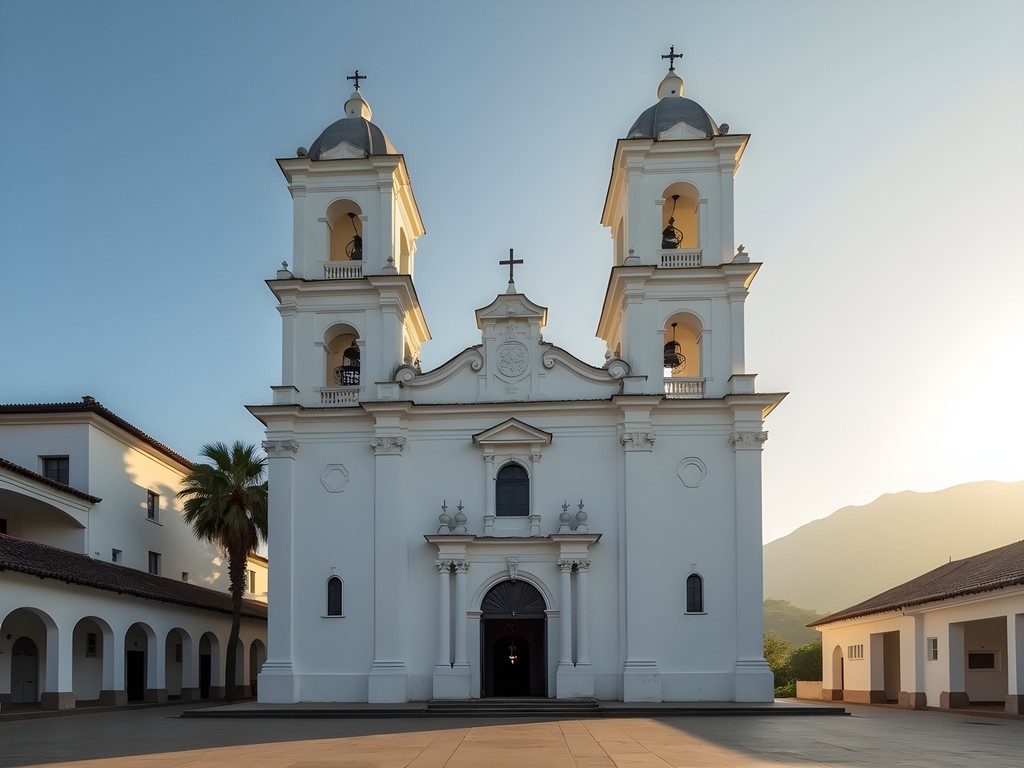
💡 Pro Tips
- Visit early morning (before 9am) when the cathedral is quiet and the light is perfect for photography
- Look for the small museum at the back of the cathedral that displays historical photographs of Buenaventura's development
- Attend Sunday morning mass to experience the cathedral as a living community space rather than just a historical monument
The Forgotten Railway: Estación del Ferrocarril
My fascination with vintage trains drew me to what is perhaps Buenaventura's most poignant historical site: the abandoned Estación del Ferrocarril. Built in the early 1900s, this railway station once connected Colombia's Pacific coast to the interior, transforming Buenaventura into the country's most important port and creating an economic boom that shaped the modern city.
Today, the station stands in semi-ruin, its faded yellow walls and crumbling platforms a testament to changing economic priorities and abandoned infrastructure. As I walked through the empty halls, my footsteps echoing against peeling paint and exposed brick, I couldn't help but think about how railway systems so often define the growth patterns of cities – creating neighborhoods, determining commercial centers, and establishing transportation corridors that outlive the trains themselves.
The most striking feature is the old clock tower, its hands frozen at 3:15 – though whether AM or PM, and from what date, nobody could tell me. Local legend says the clock stopped the day the last train departed, but historical records suggest the railway continued operating sporadically into the 1990s before final abandonment.
I spent an afternoon photographing the station with my mirrorless camera, trying to capture the quality of light as it streamed through broken windows and illuminated decades of dust. The station is technically not open to tourists, but a small community organization of railway enthusiasts conducts informal tours on weekends. My guide, Carlos, whose grandfather had worked as a station master, shared family photographs and stories that brought the bustling historical railway to life in my imagination.
What struck me most was how the railway's design reflected both European industrial architecture and adaptations to the tropical Pacific climate – high ceilings for heat circulation, covered outdoor waiting areas that protected from sudden rainstorms, and materials selected to withstand the coastal humidity.
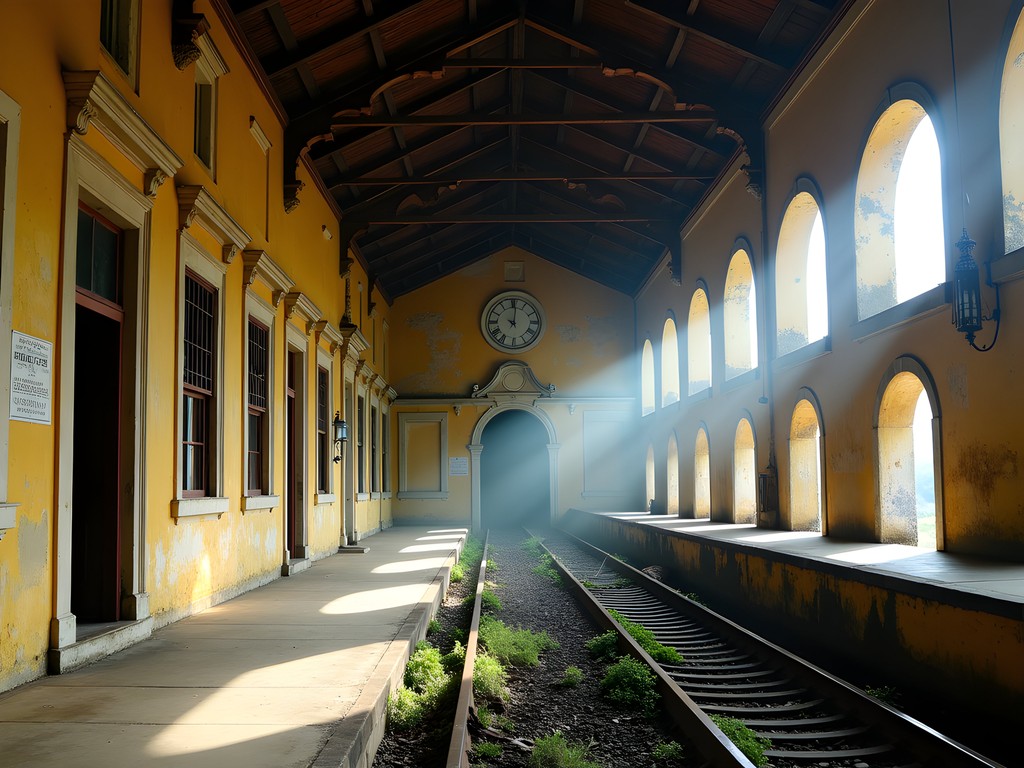
💡 Pro Tips
- Contact the local historical society at least a day in advance to arrange a guided tour of the station
- Bring cash for the suggested donation that helps with preservation efforts
- Wear closed-toe shoes as there may be debris in less-maintained areas of the station
Afro-Colombian Heritage: La Casa de la Cultura
Buenaventura's population is over 90% Afro-Colombian, yet this demographic reality isn't always reflected in the city's official historical narratives. That's why La Casa de la Cultura stands as such an important historical landmark – not for its architectural significance (it's housed in a modest mid-century building), but for its role in preserving and celebrating the African heritage that fundamentally shaped this region.
When I visited on a humid Wednesday afternoon, I was fortunate to meet Doña Elena, an elder who has spent decades collecting oral histories from Buenaventura's oldest residents. Through her stories, translated by a younger volunteer, I learned how enslaved Africans brought to this coast developed unique cultural practices that blended their ancestral traditions with indigenous knowledge and Catholic influences imposed by Spanish colonizers.
The small museum within La Casa de la Cultura displays historical photographs, traditional musical instruments, and artifacts from daily life in Afro-Colombian communities along the Pacific. What fascinated me most as an urban designer was learning how these communities developed distinctive architectural styles adapted to the coastal environment – houses built on stilts to manage flooding, community layouts that prioritized shared spaces, and construction techniques using local materials that responded to the humid climate.
The highlight of my visit was witnessing a rehearsal of a traditional dance group preparing for an upcoming festival. The rhythmic movements and powerful drumming patterns have remained remarkably consistent over centuries, creating a living link to the African heritage that arrived on these shores through the traumatic history of the slave trade but evolved into something uniquely Colombian.
Before leaving, I purchased a small handwoven basket made by local artisans using traditional techniques – a tangible connection to the living history that continues to shape Buenaventura's cultural landscape.
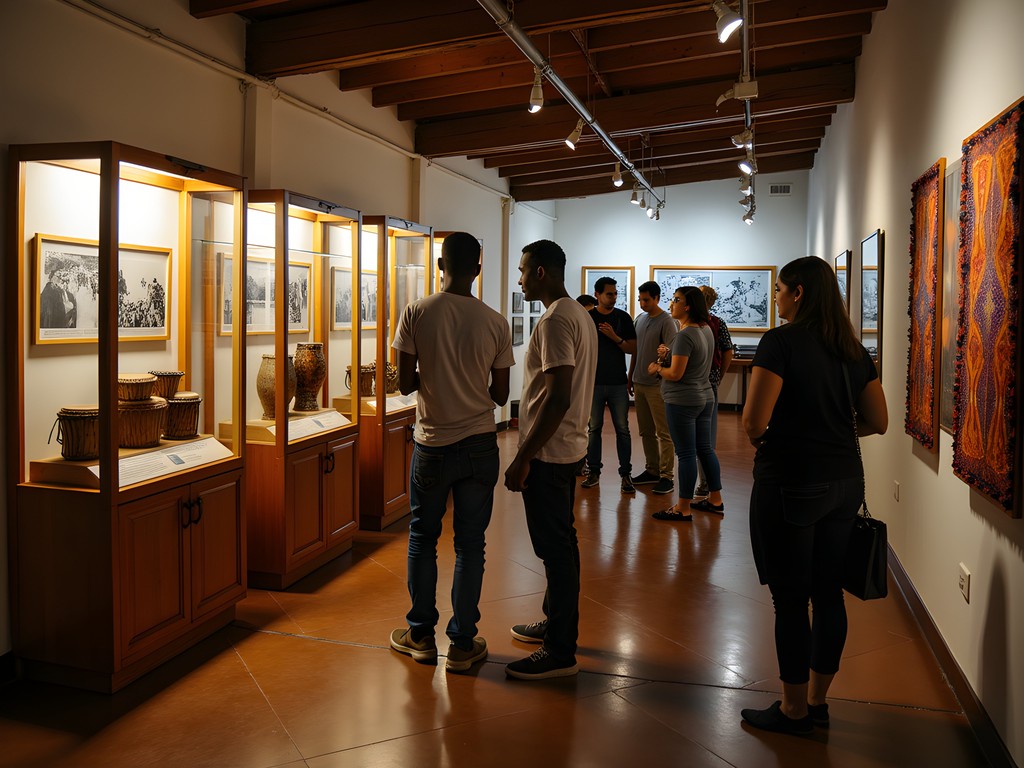
💡 Pro Tips
- Check the cultural center's schedule in advance as performance days offer the richest experience
- Consider hiring a local guide who specializes in Afro-Colombian history for deeper context
- Bring small bills to purchase authentic crafts directly from local artisans who sell their work here
Maritime History: El Muelle Turístico
No exploration of Buenaventura's history would be complete without visiting El Muelle Turístico (Tourist Pier), which offers both historical context and stunning views of the natural bay that made this location strategically important for centuries. The recently renovated boardwalk represents an interesting attempt to reclaim Buenaventura's connection to its maritime past while creating new public space for residents and visitors alike.
Armed with my travel binoculars, I spent a fascinating morning observing both the modern port operations in the distance and the traditional fishing boats that still ply these waters using techniques passed down through generations. The juxtaposition perfectly encapsulates Buenaventura's historical narrative – a place where ancient practices and industrial modernity have coexisted for centuries.
The small maritime museum at the pier entrance provides context through maps and models showing how the natural harbor has been modified over centuries. What struck me from an urban design perspective was seeing how the city's relationship with the water has evolved – from indigenous fishing settlements to Spanish colonial port to industrial shipping hub. Each phase left its mark on the urban fabric in ways that continue to influence how people navigate and use the space today.
I was fortunate to meet Don Jaime, an elderly fisherman mending nets near the pier who, upon learning of my interest in local history, shared stories about how the harbor looked in his youth before large-scale industrial development. His descriptions of the mangrove forests that once lined much of the bay offered a glimpse into the ecological history that predates human settlement – a reminder that natural history and human history are always intertwined.
The pier itself, though primarily a tourist infrastructure, incorporates design elements that reference historical maritime architecture – from the wooden planking reminiscent of colonial docks to lighting fixtures inspired by traditional fishing lanterns. These thoughtful details create a space that feels both contemporary and historically grounded.
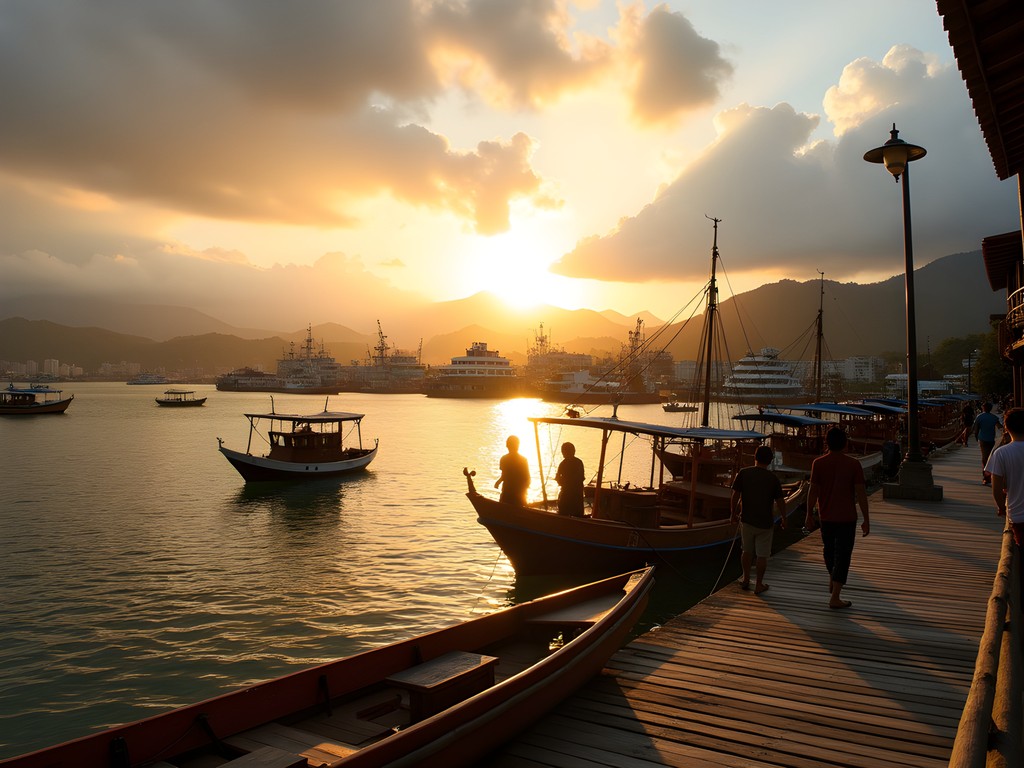
💡 Pro Tips
- Visit at sunset when the lighting transforms the bay and creates stunning photo opportunities
- Take the short boat tour offered by local fishermen for a water-based perspective of the city's development
- Bring a light jacket as the evening sea breeze can be surprisingly cool even in this tropical climate
Indigenous Roots: Museo Arqueológico
Tucked away on a quiet street near the university campus, Buenaventura's small archaeological museum provides crucial context for understanding the region's pre-colonial history. Though modest in size, the collection offers remarkable insights into the indigenous cultures that thrived along Colombia's Pacific coast long before European arrival.
The museum houses an impressive collection of ceramics, stone tools, and gold artifacts recovered from archaeological sites throughout the Valle del Cauca region. What struck me most were the sophisticated pottery pieces dating back to 500 BCE, demonstrating advanced artistic techniques and complex symbolic systems that challenge colonial narratives about 'primitive' pre-European societies.
As I examined intricate gold ornaments created by the Calima culture, I reflected on how these artifacts represent not just artistic achievement but sophisticated understanding of metallurgy and material science. The museum curator, Dr. Martínez, explained how these indigenous groups developed sustainable resource management systems adapted perfectly to the unique Pacific coastal environment – systems disrupted by colonial exploitation but which contain valuable lessons for contemporary environmental challenges.
The most powerful exhibit features maps showing the extensive trade networks that connected indigenous groups along the Pacific coast from present-day Ecuador to Panama. These waterways and mountain paths formed sophisticated commercial corridors long before European concepts of international trade – a historical reality that challenges the colonial narrative of 'discovering' and 'developing' the region.
For visitors interested in deeper understanding, the museum offers a small but excellent collection of books on regional archaeology. I spent hours taking notes in my waterproof notebook (essential in Buenaventura's unpredictable climate), connecting archaeological findings to the contemporary urban patterns I observed throughout the city.
What makes this museum particularly significant is how it centers indigenous perspectives in Buenaventura's historical narrative – acknowledging that the city's story begins thousands of years before Spanish ships arrived on these shores. For urban designers like myself, it provides crucial context for understanding how human settlement patterns in this region evolved in response to the specific environmental conditions of Colombia's Pacific coast.

💡 Pro Tips
- Call ahead as opening hours can be irregular depending on university schedules
- Request an English-speaking guide if your Spanish is limited (arrange at least a day in advance)
- Don't miss the small research library on the second floor where you can view historical maps of the region
Final Thoughts
As my week in Buenaventura drew to a close, I found myself sitting at a small café near the harbor, sketching the interplay of colonial architecture against the lush backdrop of Pacific rainforest. This city, often reduced to statistics about its port or headlines about its challenges, revealed itself to me as a living museum of Colombian history – where indigenous wisdom, African resilience, European colonialism, and industrial development have created a unique urban tapestry. The landmarks I've shared represent just the beginning of what Buenaventura offers the historically curious traveler. Beyond these sites lie countless stories embedded in neighborhood layouts, building techniques, and the living cultural practices of its people. For those willing to look beyond the obvious and engage with both the triumphs and tragedies of this complex city's past, Buenaventura offers profound insights into Colombia's journey – and perhaps, important lessons for creating more sustainable, culturally rich urban environments for the future.
✨ Key Takeaways
- Buenaventura's historical sites reveal a complex narrative of indigenous cultures, Spanish colonialism, and Afro-Colombian heritage that challenges simplified historical accounts
- The city's architectural elements reflect adaptation to both cultural influences and the unique Pacific coastal environment
- Local community organizations and small museums play a crucial role in preserving historical narratives often overlooked in mainstream tourism
- Understanding Buenaventura's layered past provides important context for appreciating Colombia's cultural diversity and historical complexity
📋 Practical Information
Best Time to Visit
December-March (dry season)
Budget Estimate
$50-75 USD per day (mid-range)
Recommended Duration
4-7 days
Difficulty Level
Intermediate
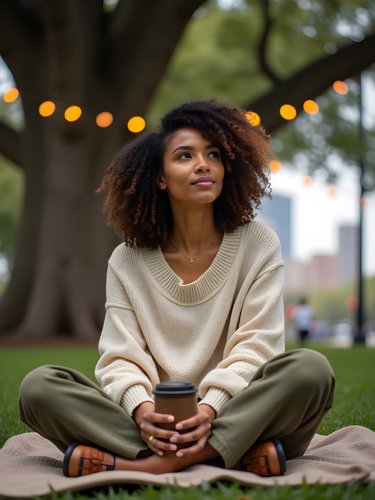

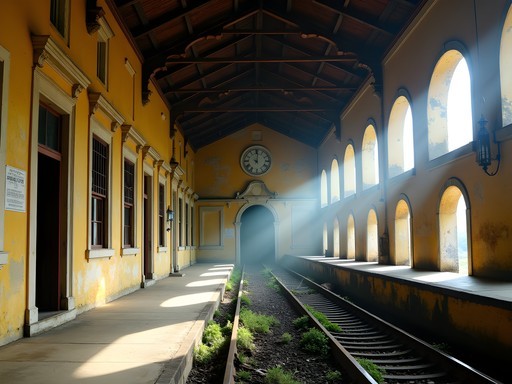
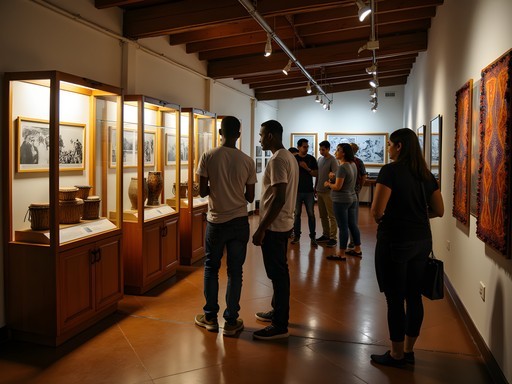
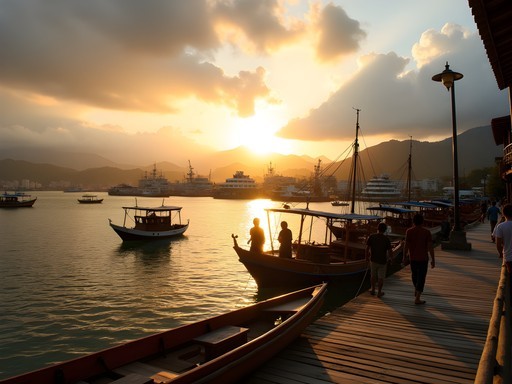
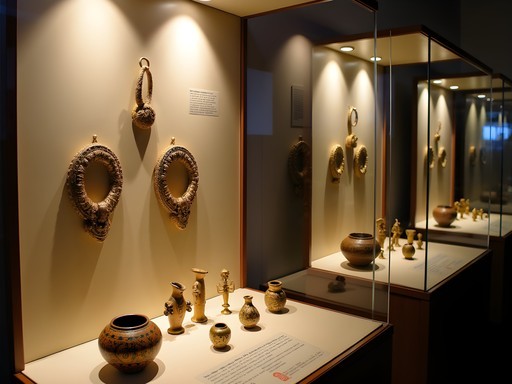









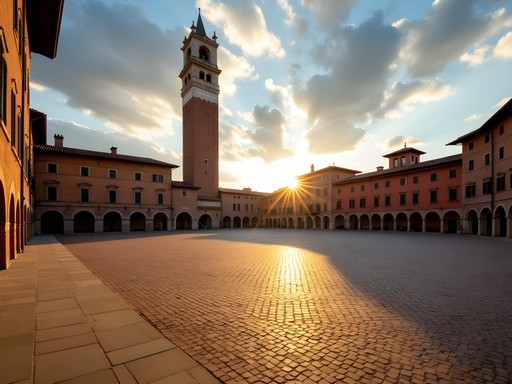
Comments
wanderlustexplorer
Those railway photos are haunting. History right before our eyes.
Kimberly Murphy
Allison, your post brings back such vivid memories of my own visit! The Catedral de Buenaventura was undergoing some restoration when I was there, but it was still magnificent. For anyone planning to visit, I'd add that the small museum near the railway station has some fascinating artifacts from the colonial period that really complement what you'll see at the sites themselves. Also worth mentioning is the sunset view from El Muelle Turístico - absolutely spectacular with all the fishing boats coming in. I spent three evenings just sitting there sketching and chatting with locals. They have a small weekend market there too with amazing local crafts. The intricate woodcarvings reflect so much of the Afro-Colombian heritage Allison mentioned!
springqueen
Those woodcarvings sound amazing! Are they expensive?
Kimberly Murphy
They range from small affordable pieces (around $10-15 USD) to larger intricate works. I bought a beautiful hand-carved mask for about $30 that's now my favorite souvenir from Colombia!
cityfan
Great write-up! Did you get a chance to try any specific local dishes while visiting these historical sites? Planning my Colombia trip for next year and Buenaventura wasn't on my radar until now.
vacationbuddy
Just got back from Colombia and included Buenaventura because of this post. The Catedral was beautiful but currently undergoing some restoration. The maritime museum at El Muelle Turístico was the highlight for me - they had a special exhibition about local fishing traditions that wasn't mentioned in the blog. Stayed 2 nights which felt about right. Locals were incredibly friendly once they realized we were interested in the history and not just passing through to somewhere else.
oceanstar
Did you feel safe there? Still debating whether to include it in my itinerary.
vacationbuddy
We stuck to the main tourist areas during the day and took taxis at night. No problems at all, but definitely stay aware of your surroundings like anywhere. The historical district felt quite secure with police presence.
happydiver
WOW!!! Just booked my tickets to Colombia and adding Buenaventura to my itinerary after reading this!!! Can't wait to see that gorgeous cathedral and learn about the railway history!!! Your photos are AMAZING!!!
adventureadventurer
Just got back from Buenaventura last month and visited most of these places! The railway station was such a fascinating glimpse into the past - those old photos they have displayed really show how important it was to the city's development. We also took a guided tour at La Casa de la Cultura which I'd highly recommend - our guide shared stories about Afro-Colombian traditions that you wouldn't find in any guidebook. One tip: we found using the local colectivos (shared taxis) was the best way to get between sites. Much cheaper than regular taxis and a fun local experience!
cityfan
How easy was it to figure out the colectivos? I'm planning a trip there but worried about the language barrier since my Spanish is very basic.
adventureadventurer
It was actually pretty straightforward! Most colectivos have signs in the windshield showing their route. I used my pocket phrasebook for basic directions. Hotel staff can also tell you which one to take for specific destinations. Just show the driver where you want to go on a map if needed!
Gregory Boyd
Fantastic deep dive into Buenaventura's overlooked historical significance. I backpacked through Colombia last year and regrettably skipped Buenaventura based on its reputation. Your analysis of how Afro-Colombian heritage is preserved at La Casa de la Cultura is particularly enlightening - this intersection of cultural resilience and historical marginalization creates a unique narrative worth exploring. For those considering a visit, I'd recommend pairing it with Valle del Cauca's other attractions for a more comprehensive understanding of the region's development. The contrast between Buenaventura and Cali tells a fascinating story about Colombia's economic evolution.
vacationbuddy
Gregory, did you feel safe in other parts of Colombia? Planning my first South America trip and trying to decide which regions to include. I've heard mixed things about the Pacific coast.
Gregory Boyd
Absolutely felt safe in most regions, but always did my research. Medellín, Cartagena, and the Coffee Region were quite comfortable for travelers. The Pacific coast requires more awareness - I'd recommend travel guidebook which has excellent safety sections for each region. Just use common sense and you'll have an incredible experience!
oceanstar
Is it possible to visit all these historical sites in one day? Planning a day trip from Cali next spring.
Taylor Moreau
Allison, this is precisely the type of historical documentation that's needed for underrepresented destinations like Buenaventura. I visited in 2024 for a business conference and was struck by how the city's complex history is largely absent from mainstream travel literature. The railway station particularly resonated with me - a poignant symbol of boom-and-bust economic cycles that have shaped the region. Did you encounter any challenges regarding safety during your visit? Many of my colleagues were hesitant to explore beyond our hotel vicinity due to the city's reputation.
wanderlustexplorer
I was wondering about safety too. Everyone warns about Buenaventura but seems like you had a good experience?
islandphotographer
Never considered Buenaventura as a destination! Your photos of the cathedral are stunning.
Venture X
Premium card with 2X miles, $300 travel credit, Priority Pass